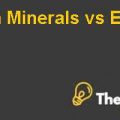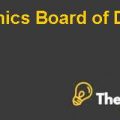
- 1. How are the companies doing financially? Which areas are positive? Which areas are concerned?
LinkedIn Corporation is a famous social networking site for professional where they exchange their ideas, conduct recruitment hunt for jobs and for vacant job posts compatible with employees. Its major competitive advantage seems to lie in its membership of its visitors. It was seen that by 2010 it reached to 100 million members along with a market capitalization of $8.9 billion versus its two major competitors VIADEO with 35 million members and XINGAG with 10.8 million members.
LinkedIn with its first mover advantage occupied a milestone for itself, which significantly affected the firm’s reputation and increased its presence. To recall the account information at the networking levels and shifting it from one surfer to another is not very easy. In addition networking not only brought revenues, but due to higher membership rates it was seen that LinkedIn attracted the major chunk of revenues towards itself from advertisements and subscription fees. These revenues and subscription fees were earned through job postings. Further in order to increase its positives, LinkedIn primarily focused on recruitment drives through its web base which was the demand of time as indicated through a survey. This survey indicated that 56% of the people used social networking sites for the purpose of recruitment whereas the rest of the people used it for socializing purposes. The demographics also proved to be a great advantage for LinkedIn, as it was seen that members signed up or subscribed to LinkedIn were more educated with higher income brackets and were more likely to get the job compared to what the peers got.
However, LinkedIn also has a lot of major concerns regarding the sustainability of its members in the long term. LinkedIn offers majority of its services to the U.S. market and the remaining gap left by LinkedIn acted as an opportunity for two new competitors that is VIADEO and XINGAG whose primary focus is on European based economies although their genre is similar to LinkedIn. Hence, the geographical grasp was also a major threat for LinkedIn; which gave rise to its two its two new competitors. Additionally, LinkedIn also lacks the ability to capture other languages in its services that its major competitors are doing very rapidly and it is seen that XINGAG is increasing it’s per month subscription with a good pace versus LinkedIn. It is also observed that LinkedIn’s major portion of revenues is generated from the subscription fees which are very low; therefore LinkedIn is not able to earn revenues from this side. Moreover, the peers are at an advantage of extracting revenues by accumulating 8% paid subscriber fees versus 1% of the LinkedIn. However, to expand its services to the European market, LinkedIn needs to incur internal costs which include site revamp in order to cater different languages plus the technological infrastructure preferable to consumers abroad also need to be incorporated.
- 2. What assumptions seem to underlie the current valuation for LinkedIn as of this date, and what do you think about them?
The current valuation of LinkedIn by major investment houses is different from each other in a way of what comparables they are using and what assumptions they have underlie. There are three methods through which the company’s current valuation of $9 billion market as of July 2007 can be done. First method for valuation involves the use of comparables; the second method is the peers who are also publicly trading; and the third method can be performed by using other companies other than peers who are publicly trading or they can compare the valuation to companies which are outperforming the stock’s secondary market in order to find the true worth of the company through other social networking sites.
Considering the JP Morgan valuation standard and the underlying assumptions, the report was produced one month back. The report rated the LinkedIn Equity overweighed with a calculated target price of $85 assuming the issue date price to be at $76.38 with a revenue forecast at compound annual growth rate of 55% which is in excess to the compound annual growth rate from which the share price have been calculated e.g. 10.6%. Furthermore, the cost of capital (weighted average cost of capital) is assumed to be 10.5% where as the share price now have been calculated by 12% WACC. The Capstone Securities rated the LinkedIn equity as a sell recommendation because it is an overvalued stock with the assumptions as of July 7, 2011 (latest) to be compared with the issued price of$94. It valued the share price as $45 with the assumption of 46% compound annual growth rate and the EBITDA are forecasted at 21.4% margin..............
This is just a sample partial case solution. Please place the order on the website to order your own originally done case solution.













